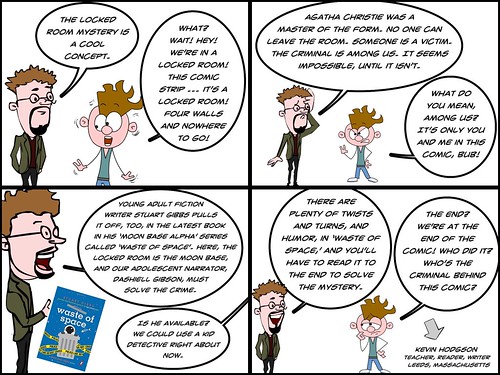
Compassion is a word that comes to mind after readingJarrett Krosoczka’s new graphic memoir entitled Hey, Kiddo. I’m not speaking of the compassion of the reader to his story — although one gets to know of his struggles and his family’s love for him despite the situation, and certain compassion is activated — but of Krosoczka’s compassion for his own younger self.
There’s a real spirit of fighting against the odds in this story, and of finding the people who will be there to support you along the way. If you are lucky. For surely, just as Krosoczka’s story shows how far he came with a mother with a heroin addiction and a father who did not reach out to him until his late teen years, there are so many kids — they’re in our classrooms if we look close enough — who are struggling without the support Krosoczka was able to get from his grandparents and extended family.
If you don’t know of Krosoczka, he is a talented storyteller and graphic artist, known mostly among my students for his Lunch Lady series. But he has also done other stories that reach an elementary audience. Hey Kiddo is very different in style and substance and depth (not to take away from Lunch Lady) — even my 14-year-old son, picking up my copy of the book, which I told him he really should read, asked: “He wrote the Lunch Lady? This seems … very different.”
What emerges from Hey Kiddo is the power of story, and the way he was able to use art and comics to find his way forward through his childhood struggles. It also points to the power of adults encouraging those talents. His grandparents — rough and endearing — were his vital support network, providing opportunities for his art (one birthday, he got a drafting table from them; another time, they surprised him with lessons at an art gallery that proved to be a critical juncture forward.)
I also appreciated the end notes, where Krosoczka writes about the writing of this story. How difficult it was to tell. How important it was to tell. And when he talks about his choices for the book’s artistic style – the reasons behind color hues, or the meaning of background images, or the rationale for frames spilling into each other — it is nearly a master lesson on making comics.
This book is more geared for middle and high school and adult readers, just in case you are in a school setting thinking of adding this to your library because of Krosoczka’s name and his previous work. While advanced elementary readers might be interested in his story, know that the references to drug abuse and other traumatic events are central to Krosoczka’s story. That said, there’s nothing here that does not reflect the larger world and nothing so graphic that even an elementary student would be alarmed by. Still, I ‘d suggest you read it first before bringing it into your classroom.
And of course, you should read Hey, Kiddo anyway. It’s that good.
Peace (between pages),
Kevin










